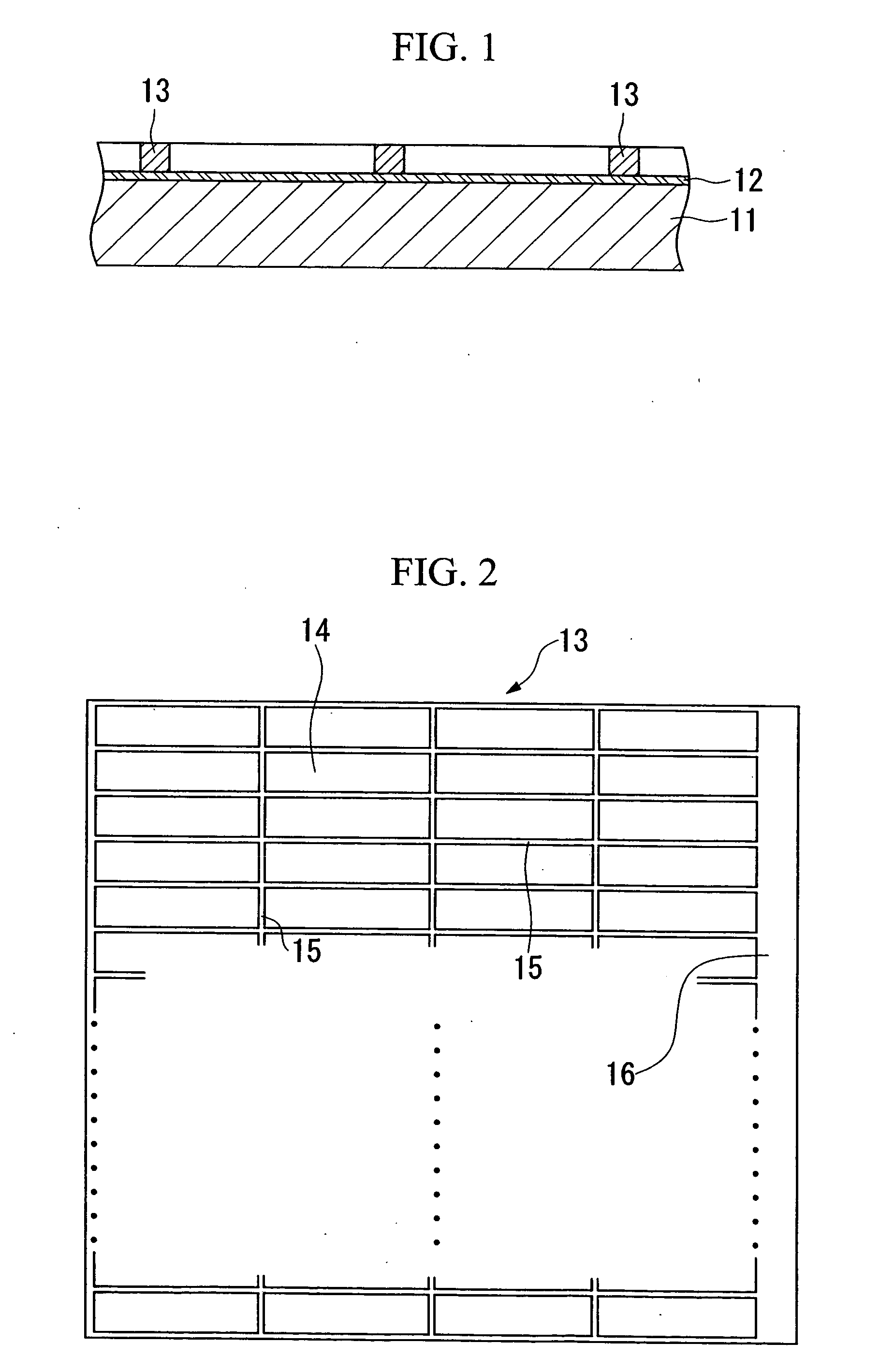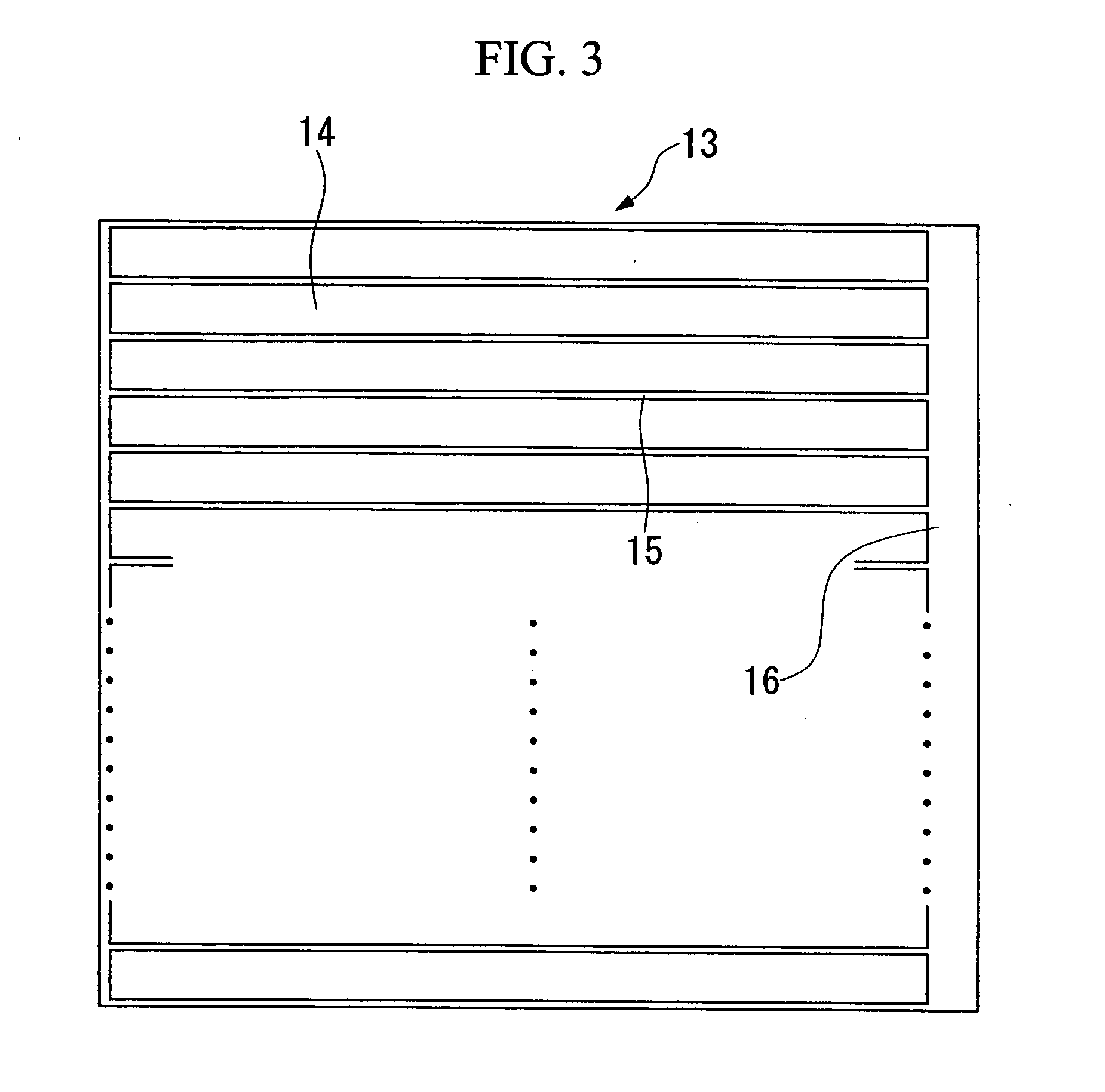Electrically conductive glass and photoelectric conversion element using the same
a technology of photoelectric conversion element and conductive glass, which is applied in the direction of conductive layers on insulating supports, electrochemical generators, electrolytic capacitors, etc., can solve the problems of leakage current flow, disadvantage in cost, and flow of leakage curren
- Summary
- Abstract
- Description
- Claims
- Application Information
AI Technical Summary
Problems solved by technology
Method used
Image
Examples
example 1
[0098] This Example 1 corresponds to the previously described first embodiment.
[0099] A transparent electrically conductive glass was prepared in which a transparent electrically conductive film composed of FTO having a thickness of 0.5 μm was provided on a glass plate having a thickness of 2 mm.
[0100] A lattice-shaped grid like that shown in FIG. 2 was provided on the aforementioned FTO of this transparent electrically conductive glass. The types of metal that served as the grid along with their formation methods were as indicated below, however, a barrier layer composed of titanium oxide or FTO was formed for some of the metals for the sake of comparison.
FormationNo.MetalMethod 1AluminumVapordeposition 2TitaniumSputtering 3ChromiumPlating 4CobaltPlating 5NickelPlating 6GoldPlating 7PlatinumPlating 8SilverPlating 9PlatinumPlatingFormation of barrier layer composed oftitanium oxide10GoldPlatingFormation of barrier layer composed oftitanium oxide11SilverPlatingFormation of barrie...
example 3
[0126] Example 3 corresponds to the aforementioned second embodiment.
[0127] A commercially available electrically conductive glass (Asahi Glass Co., LTD.) was prepared in which a transparent electrically conductive film having a thickness of 0.5 μm and composed of FTO was provided on a glass plate having a thickness of 2 mm.
[0128] A seed layer having a thickness of 0.05 μm and composed of nickel was formed on the FTO of this transparent electrically conductive film by sputtering.
[0129] Next, a diffusion-preventing film having a thickness of 0.025 μm and composed of titanium or chromium was formed on this seed layer by sputtering.
[0130] Next, after plating nickel onto this diffusion-preventing film using a nickel sulfamate solution in the same manner as the previously described production process, a heat treatment was carried out at 450° C. to provide a lattice-shaped grid composed of nickel as shown in FIG. 2 and an electrically conductive glass was produced. At this time, the d...
PUM
| Property | Measurement | Unit |
|---|---|---|
| thickness | aaaaa | aaaaa |
| thickness | aaaaa | aaaaa |
| thickness | aaaaa | aaaaa |
Abstract
Description
Claims
Application Information
 Login to View More
Login to View More - R&D
- Intellectual Property
- Life Sciences
- Materials
- Tech Scout
- Unparalleled Data Quality
- Higher Quality Content
- 60% Fewer Hallucinations
Browse by: Latest US Patents, China's latest patents, Technical Efficacy Thesaurus, Application Domain, Technology Topic, Popular Technical Reports.
© 2025 PatSnap. All rights reserved.Legal|Privacy policy|Modern Slavery Act Transparency Statement|Sitemap|About US| Contact US: help@patsnap.com



